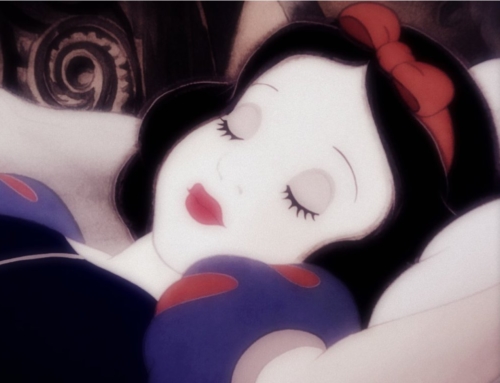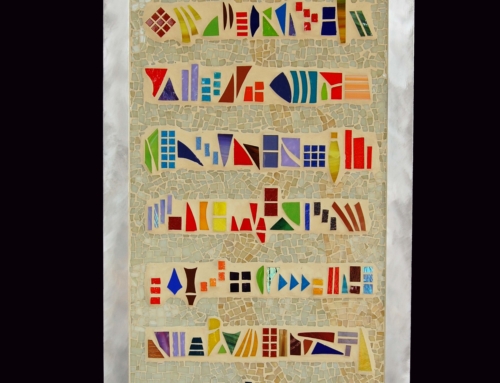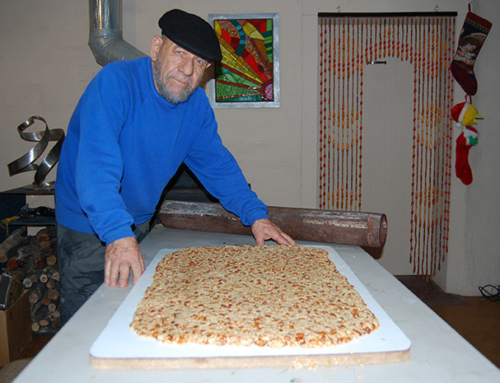CREATIVE MIND
“Why can’t you be like everybody else?”
We, all of us, are creative people. There are infinite shades of color and intensity. Some people are orderly in their creativity, others are disorganized. Some creative minds function in a controlled manner, others are overactive and chaotic. I can only speak to my personal condition and can only do that unscientifically.
For better or worse, the creative mind is part of me. And that condition has caused small griefs and big joys my entire life. From early childhood I was aware of differences in my thinking and action from that of my childhood friends. Neither in the creative genius group with DaVinci and Michelangelo nor in the dull crowd with Barney Fife and Three Stooges’ Curly, I am somewhere in the middle and a bit more creative than the average person – on a creativity scale of 0-100 maybe a 60 or a 65.
At five years of age, the realization that my thinking was different began to form. My friend and I were going to spend an afternoon assembling a model from balsawood. We had identical models of battleships with all the pieces that needed to be glued together and painted. The instruction sheet was provided with the model kit. My friend started immediately. I began, but more slowly because I thought one piece looked better on this part of the ship and not where the instruction sheet indicated. But my friend said “you shouldn’t do that because the big guns wouldn’t be able to rotate.” Then I started to put the smoke stacks farther arrears than was shown. And my friend said “but if the engines were there the ship would sink more easily.” I remember that my thought was that they looked better my way. After five or six such problems, I quit. I gave my entire kit to my friend. He could have two battleships. For me, to make a model was supposed to be fun, not an exercise in self discipline.
Later, as a teenager, some of my friends were restoring old cars. They spent hours and hours recreating these autos with great care and exactness. They did splendid work which I greatly admired. While I appreciated the restorations, I much preferred hotrods, using components of some of those beautiful old cars to create a new and unique vehicle. That was attractive to me. Why not a detailed restoration? I realize now that I could never complete such a project because someone years earlier had already created that car. Someone had already done that. I needed to create … not maintain, repair or restore.
Recently I read The Creators by Daniel Boorstin, a 750 page, very detailed history of creative people from the ancient Hindus to modern moviemakers. The book itself is a remarkable creation. Packed with facts and thoughtful opinions and explanations, the book was a disappointment. The sheer joy of creation was not conveyed to me, despite my love for reading. I have read articles about creativity and creative people, listened to radio programs and seen TV documentaries about musicians, inventors, business people, actors, artists, etc. Too often, I feel, creativity is associated with insanity or “madness.” But creativity is not unique to the supersensitive, nervous shambles of an artist who is unable to deal with the “normal” world. Creativity occurs just as often in the steady, down-to-earth, the thoughtful, relaxed, more controlled persons – The more “normal” persons.
Now comes the question: What is Normal? And another question: Does Normal actually exist? And, if the answer is yes, who says so? The normal people? “Normal” is something, I suppose, which some portion of society says it is. But that is for some other discussion by thinkers far more skilled than I in philosophical horse manure.
Creative people among us really have little choice. They either create something (a new business, a different process in hairstyling, a new skateboard wheel) or they begin to warp. The artist must find some outlet for creative expression or drive himself into some form of craziness. So it really isn’t a choice. Rarely (but it does happen) someone will ask me “Why do you keep doing sculpture and mosaic stuff, you have enough already?” The only answer which makes sense to me is … “I can’t not do it.” It’s a delight and a burden – that endless stream of things I want to do and knowing I haven’t the hours, the physical strength, or the lifespan to accomplish. As I have aged, I’ve reluctantly accepted some of those limitations.
Three personal rules for what I consider would result in a good life can be directly applied more narrowly to my own creativity… (1) Don’t be afraid to be different. (2) Don’t be afraid to fail. (3) Don’t be afraid to break all the rules.
My creative process seems slow, but almost never stops. Not frenzied or lightening quick (two comedians come to mind – Jonathan Winters and Robin Williams), my mind wanders. I can be forgetful or distracted because my thinking always seems to be on some little side journey and I joke that some of my best ideas occur as I drive through red lights or stop signs. Every art piece in my shop involves some experimentation with process or method, usually not a radical departure from what I know, but I do know there will be some percentage of disaster, but I’ve never been afraid to fail. It’s part of the process, it grows your inner soul and is part of the joy of creation. Many years ago, a sculptor friend from Germany asked this: “What does it feel like to you when you are in your shop and things are really percolating and everything is working perfectly?” I remember saying it was a beautiful thing, with nothing quite like it, that it was like being in a mild frenzy and being in a trance at the same time, and that as I moved around the shop my feet didn’t seem to touch the ground. “Exactly”, he said and moved his hand parallel to the ground. “Eleven centimeters, I measured it!” I laughed and said, “Leave it to a German to measure such a thing.”
Only occasionally do I work with another artist. I don’t hang around with artists because they’re just too weird. They’re always doing something different. They always seem to go to one extreme or another. They dress funny. They do strange things. They are not like other people. One day, perhaps in second grade, the classroom teacher was truly annoyed at one or another of my non-conforming behaviors. Almost shouting, she said, “Why can’t you be like everybody else?” Most kids would have been embarrassed (I was not) or scared (I was, but just a little). At that time, I was just trying out my newfound smartassery. I said, “Because everybody else is already like everybody else.” That made perfect sense to me then … and still does.
Aureleo Rosano
www.rosano.org
Tucson, AZ
Dec 2013 / March 2015 edit



[…] Want to read more about Aureleo’s thoughts on creativity? Check out his blog here: http://rosano.org/blog/creative-mind/ […]
[…] Want to read more about Aureleo’s thoughts on creativity? Check out his blog here: http://rosano.org/blog/creative-mind/ […]